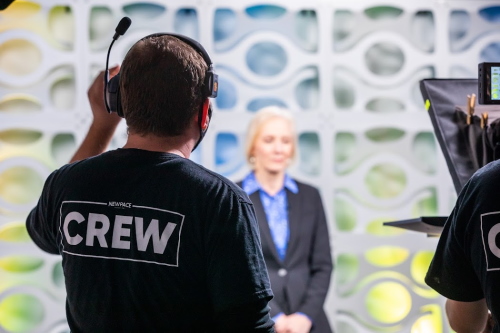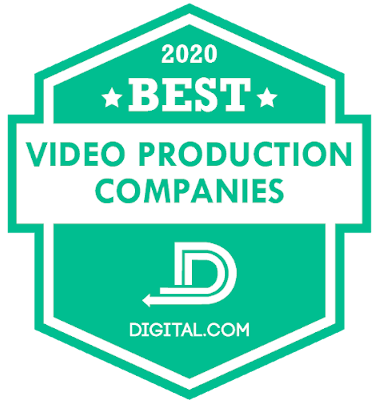If you’re producing corporate video content for your organization, you’ll want to get the most usage and value from your investment.
A smart first step is hiring a corporate video production company or videographer to help you produce your video film production. When you hire professional corporate video production services, you will gain a dedicated creative partner to help make compelling video content that engages and inspires your audience.
Filming corporate videos is just one of the services companies looking for video production get with a video content partner. Another important service is content optimization. With content optimization, you can make sure the video content you’ve produced for your website is easily shared across other platforms to reach the largest audience.
From social media and mobile watching to video sharing sites, search engine results pages (SERPs) and more, optimizing content involves customizing the viewing experience for each platform so it is as effective and useful as possible for your audience. Here’s how.
Optimize for Mobile Watching
Chances are many of your audience members will encounter your videos first by watching on their phones, probably while doing something else. More than 75% of worldwide video views are from mobile devices.
People are watching a variety of content from mobile devices, everything from short videos to long-form documentaries, even engaging in paired viewing—watching video on a desktop and a mobile device simultaneously. Just like a mobile-optimized website, video that’s optimized for mobile will reach more of your audience at a quicker rate, which can increase viewer satisfaction.
Mobile watchers often view video content without sound, which will affect your creative delivery. If you want your video to be just as effective with the sound off as it is with the sound on, consider telling your story using bold graphics or text animations that coordinate with your audio script. If your video includes interview footage, you can include subtitles of the dialogue or captions. If you’re using video content in a blog, include a transcript of the audio track in the word count.
Optimize for Each of Your Social Media Accounts
Your social media followers expect you to understand their preferences and values. They also expect you to automatically adjust your content to match the current context of their viewing experience—which is different for each social media platform they use.
That’s why optimization plays a critical role in video content strategy. It starts with tailoring your marketing messages for each social media audience and includes practical guidelines for each platform:
- The most popular social media platform with more than 1.5 billion daily active users.
- The most popular and well-performing videos are 12 and 30 seconds long.
- The most engaging content is designed to pique the interest of your followers or preview longer-form content available on your blog or website.
- Live streaming is popular for grand openings or behind-the-scenes experiences.
- The official video length cutoff is 140 seconds, but create video content that’s 30 to 45 seconds for maximum viewership.
- Teaser videos are the most popular.
- Known as a source for visual inspiration, Instagram added the Stories feature to increase video usage.
- Most videos get maximum views at around 30 seconds.
- Videos uploaded to your feed can be up to 60 seconds and become a permanent part of your profile.
- A Stories video lasts 15 seconds and disappears after 24 hours.
- The go-to social media platform for B2B professionals—75% of business executives watch work-related videos every week.
- You can upload videos that are up to 10 minutes long.
- Effective creative strategies include explainer videos for complex concepts, company story videos and video that establishes you as a thought leader.
Optimize for Aspect Ratio
Since your audience will likely access video content in various ways, you’ll want to be flexible with regard to video output using multiple aspect ratios. Here are the most common ratios.
16:9 Ratio—Full Landscape
- Considered the classic video format and a go-to aspect ratio.
- Preferred by YouTube watchers and often useful on Twitter, Facebook and LinkedIn.
- Mobile watchers like it too.
1:2 Ratio
- Preferred for news feeds.
1:1 Ratio—Square
- Preferred on Instagram.
- Used on Twitter, LinkedIn and Facebook to make videos stand out from the crowd.
4:5 Ratio—Vertical
- The vertical format is making a comeback due to mobile watching.
- Used on Facebook and sometimes seen on Instagram.
2:3 Ratio—Vertical
- Used on Facebook only.
9:16 Ratio—Full Portrait
- Preferred by mobile watchers because they don’t want to rotate their phones to watch a video.
- Use it to diversify your videos on Instagram stories.
Optimize for Search Results
With more than 1.5 billion logged-in users per month, YouTube is the second most popular search engine in the world. Google-owned YouTube is an industry-leading platform that streams more than 1 billion hours of video every day.
Metadata—YouTube uses metadata to index your video content correctly. To maximize your presence in search, promotion, suggested videos and ad serving, make sure your metadata is well optimized. This includes title, description and tags.
A compelling title would work like a headline for your video while representing your content accurately. Start with keywords and end with branding to grab a viewer’s imagination. For serial content, add the episode number to the end of the title.
A video description should describe your video in one or two concise sentences. Additional information can include a description of your channel, a link to your channel page, a viewer subscribe link, and a link to other episodes or related videos and playlists.
Tags are descriptive keywords that will help people find your videos. Create a set of standard tags for your channel that can be applied to any video you publish (e.g., company stories, animated explainers, how-to videos, etc.). Try to use the entire 270-character limit, and list them in order of relevance to the video. You can also include keywords from your title in your video’s tags.
Need Help Optimizing Video Content for Multiple Platforms?
A dedicated video strategy that includes content optimization is essential for you to keep pace with the competition. At New Pace, we know video has the power to engage your customers, educate your employees and inspire your target audiences like never before.
We specialize in video production and optimization for external and internal business communications. Let us help you with yours.






